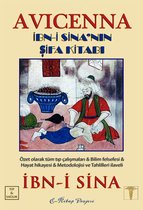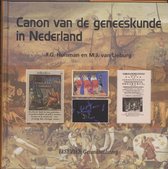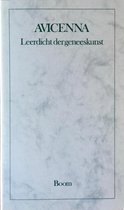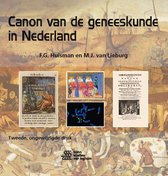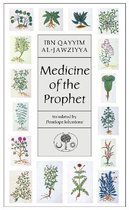Canon of Medicine
Afbeeldingen
Sla de afbeeldingen overArtikel vergelijken
Auteur:
Avicenna
Ibn S Avicenna
- Engels
- Hardcover
- 9781871031676
- 01 december 1999
- 710 pagina's
Samenvatting
Translated for the first time into English here, the Latin was translated in the 12th century and into Hebrew in 1279. Henceforth the Canon served as the chief guide to medical science in the West and is said to have influenced Leonardo da Vinci. Its encyclopedic content, its systematic arrangement and philosophical plan soon worked its way into a position of pre-eminence in the medical literature of Europe, displacing the works of Galen and becoming the textbook for medical education in the schools of Europe. The text was read in the medical schools at Montpellier and Leuven as late as 1650. and Arnold C. Klebs described it as one of the most significant intellectual phenomena of all times. In the words of Dr. William Osler, the Canon has remained a medical bible for a longer time than any other work. The first three books of the Latin Canon were printed in 1472, and a complete edition appeared in 1473. The 1491 Hebrew edition is the first appearance of a medical treatise in Hebrew and the only one produced during the 15th century. Experimental medicine the Canon of Medicine was the first book dealing with evidence-based medicine, experimental medicine, clinical trials, randomized controlled trials, efficacy tests, risk factor analysis, and the idea of a syndrome in the diagnosis of specific diseases. According to Toby Huff and A. C. Crombie, the Canon contains a set of rules that laid down the conditions for the experimental use and testing of drugs which were a precise guide for practical experimentation in the process of discovering and proving the effectiveness of medical substances. Inductive logic: This text contributed to the development of inductive logic, which it used to develop the idea of a syndrome in the diagnosis of specific diseases. The Canon of Medicine was the first to describe the methods of agreement, difference and concomitant variation that are critical to inductive logic and the scientific method. Pharmacy Avicenna devoted Volume 2 to simple drugs. He credits many of them to a variety of Arabic, Greek and Indian authors, and also includes some drugs imported from China, along with many of his own original contributions. Using his own expertise, he was often critical of the descriptions given by previous authors and revised many of their descriptions. Phytotherapy In phytotherapy, the Canon introduced the medicinal use of Taxus baccata L. He named this herbal drug as zarnab and used it as a cardiac remedy. This was the first known use of a calcium channel blocker drug, which was not used in the Western world until the 1960s.
Productspecificaties
Wij vonden geen specificaties voor jouw zoekopdracht '{SEARCH}'.
Inhoud
- Taal
- en
- Bindwijze
- Hardcover
- Oorspronkelijke releasedatum
- 01 december 1999
- Aantal pagina's
- 710
- Illustraties
- Nee
Betrokkenen
- Hoofdauteur
- Avicenna
- Tweede Auteur
- Ibn S Avicenna
- Hoofduitgeverij
- Kazi Publications
Vertaling
- Eerste Vertaler
- Laleh Bakhtiar
Overige kenmerken
- Extra groot lettertype
- Nee
- Product breedte
- 165 mm
- Product hoogte
- 57 mm
- Product lengte
- 241 mm
- Studieboek
- Ja
- Verpakking breedte
- 165 mm
- Verpakking hoogte
- 57 mm
- Verpakking lengte
- 241 mm
- Verpakkingsgewicht
- 1293 g
EAN
- EAN
- 9781871031676
Je vindt dit artikel in
- Categorieën
- Taal
- Engels
- Boek, ebook of luisterboek?
- Boek
- Studieboek of algemeen
- Algemene boeken
Kies gewenste uitvoering
Bindwijze
: Hardcover
Prijsinformatie en bestellen
Vaak samen gekocht
Rapporteer dit artikel
Je wilt melding doen van illegale inhoud over dit artikel:
- Ik wil melding doen als klant
- Ik wil melding doen als autoriteit of trusted flagger
- Ik wil melding doen als partner
- Ik wil melding doen als merkhouder
Geen klant, autoriteit, trusted flagger, merkhouder of partner? Gebruik dan onderstaande link om melding te doen.

